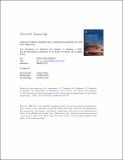Files in this item
Sintering of calcium phosphates with a femtosecond pulsed laser for hard tissue engineering
Item metadata
| dc.contributor.author | Anastasiou, A. D. | |
| dc.contributor.author | Thomson, Caroline Louise | |
| dc.contributor.author | Hussain, Syed Asad | |
| dc.contributor.author | Edwards, Tom J. | |
| dc.contributor.author | Strafford, S. | |
| dc.contributor.author | Malinowski, M. | |
| dc.contributor.author | Mathieson, R. | |
| dc.contributor.author | Brown, C. Tom A. | |
| dc.contributor.author | Brown, A. P. | |
| dc.contributor.author | Duggal, M. S. | |
| dc.contributor.author | Jha, A. | |
| dc.date.accessioned | 2017-04-06T23:33:21Z | |
| dc.date.available | 2017-04-06T23:33:21Z | |
| dc.date.issued | 2016-07-05 | |
| dc.identifier | 241802207 | |
| dc.identifier | 59170fdd-ffa3-40cd-ab8d-d8e4497c6a7c | |
| dc.identifier | 84963604683 | |
| dc.identifier | 000375413100044 | |
| dc.identifier.citation | Anastasiou , A D , Thomson , C L , Hussain , S A , Edwards , T J , Strafford , S , Malinowski , M , Mathieson , R , Brown , C T A , Brown , A P , Duggal , M S & Jha , A 2016 , ' Sintering of calcium phosphates with a femtosecond pulsed laser for hard tissue engineering ' , Materials & Design , vol. 101 , pp. 346-354 . https://doi.org/10.1016/j.matdes.2016.03.159 | en |
| dc.identifier.issn | 0264-1275 | |
| dc.identifier.other | RIS: urn:6665A04C75DE92C906D214A2022A160F | |
| dc.identifier.other | ORCID: /0000-0002-4405-6677/work/86537112 | |
| dc.identifier.uri | https://hdl.handle.net/10023/10594 | |
| dc.description | The authors acknowledge support from the sponsors of this work; the EPSRC LUMIN (EP/K020234/1) and EU-Marie-Curie-IAPP LUSTRE (324538) projects. | en |
| dc.description.abstract | Direct laser sintering on hard tissues is likely to open new pathways for personalised medicine. To minimise irradiation damage of the surrounding soft tissues, lasers operating at wavelengths that are ‘safe’ for the tissues and biomaterials with improved optical properties are required. In this work laser sintering is demonstrated with the use of an ultrafast, femtosecond (100 fs) pulsed laser operating at a wavelength of 1045 nm and two existing calcium phosphate minerals (brushite and hydroxyapatite) which have been improved after doping with iron (10 mol%). Femtosecond laser irradiation caused transformation of the Fe3+-doped brushite and Fe3+-doped HAp samples into β-calcium pyrophosphate and calcium-iron-phosphate, respectively, with simultaneous evidence for microstructural sintering and densification. After estimating the temperature profile at the surface of the samples we suggest that soft tissues over 500 μm from the irradiated zone would be safe from thermal damage. This novel laser processing provides a means to control the phase constitution and the morphology of the finished surfaces. The porous structure of β-pyrophosphate might be suitable for applications in bone regeneration by supporting osteogenic cell activity while, the densified Fe3+-rich calcium-iron-phosphate may be promising for applications like dental enamel restoration. | |
| dc.format.extent | 3431101 | |
| dc.language.iso | eng | |
| dc.relation.ispartof | Materials & Design | en |
| dc.subject | Selective Laser Sintering | en |
| dc.subject | Femtosecond lasers | en |
| dc.subject | Heat dissipation | en |
| dc.subject | Phase transformations | en |
| dc.subject | Calcium phosphates | en |
| dc.subject | QC Physics | en |
| dc.subject | DAS | en |
| dc.subject | BDC | en |
| dc.subject.lcc | QC | en |
| dc.title | Sintering of calcium phosphates with a femtosecond pulsed laser for hard tissue engineering | en |
| dc.type | Journal article | en |
| dc.contributor.sponsor | EPSRC | en |
| dc.contributor.sponsor | European Commission | en |
| dc.contributor.institution | University of St Andrews. School of Physics and Astronomy | en |
| dc.identifier.doi | 10.1016/j.matdes.2016.03.159 | |
| dc.description.status | Peer reviewed | en |
| dc.date.embargoedUntil | 2017-04-06 | |
| dc.identifier.grantnumber | en | |
| dc.identifier.grantnumber | 324538 | en |
This item appears in the following Collection(s)
Items in the St Andrews Research Repository are protected by copyright, with all rights reserved, unless otherwise indicated.

